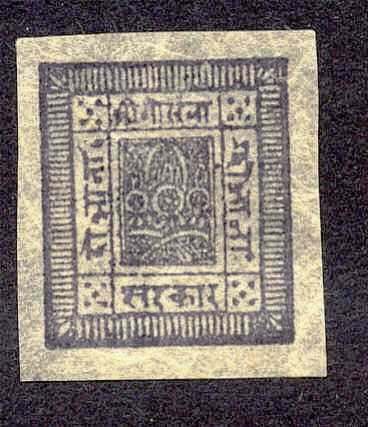
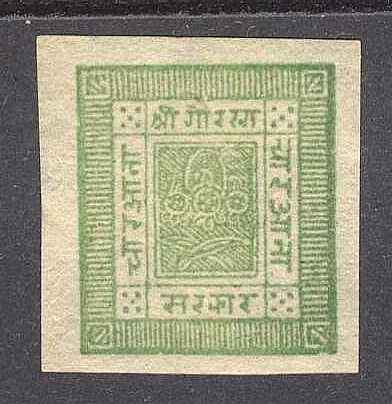
Note: on my website many of the
pictures can not be seen! They are of course present in the cd's;
contact me if you want to purchase them: evert@klaseboer.com.
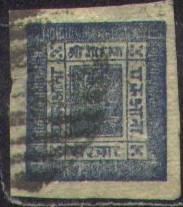
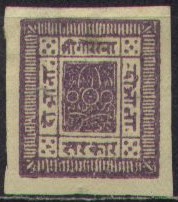
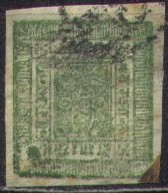
1 a blue 2 a violet 4 a green
These stamps were issued on white thick paper in 1881 (imperforate and rouletted), on yellowish local paper from 1886 onwards (imperforate and rouletted).
Value of the stamps |
|||
vc = very common c = common * = not so common ** = uncommon |
*** = very uncommon R = rare RR = very rare RRR = extremely rare |
||
| Value | Unused | Used | Remarks |
Cheapest types |
|||
| 1 a | ** | * | |
| 2 a | *** | ** | |
| 4 a | *** | *** | |
Stamp on letter:
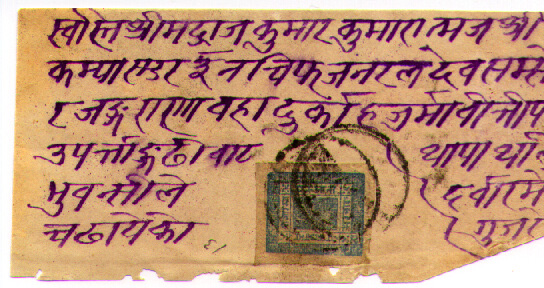
Telegraph cancel:
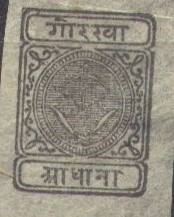
1/2 a black
Value of the stamps |
|||
vc = very common c = common * = not so common ** = uncommon |
*** = very uncommon R = rare RR = very rare RRR = extremely rare |
||
| Value | Unused | Used | Remarks |
| 1/2 a | * | ** | Imperforate or rouletted |
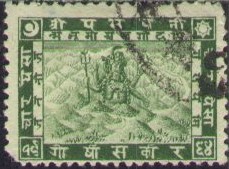
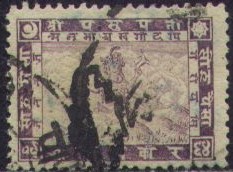
2 p brown 4 p green 8 p red 16 p violet
Value of the stamps |
|||
vc = very common c = common * = not so common ** = uncommon |
*** = very uncommon R = rare RR = very rare RRR = extremely rare |
||
| Value | Unused | Used | Remarks |
| 2 p | c | c | |
| 4 p | * | c | |
| 8 p | * | * | |
| 16 p | * | * | |
In 1932 these stamps were re-issued with slightly different text and with more values, examples:
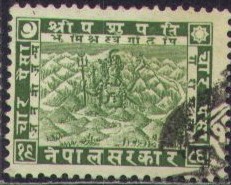
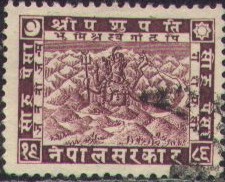
The following values exist: 2 p brown, 4 p green, 8 p red, 16 p lilac, 24 p orange, 32 p blue, 1 R brown (larger size) and 5 R black and brown (larger size).
Postal stationery, example:
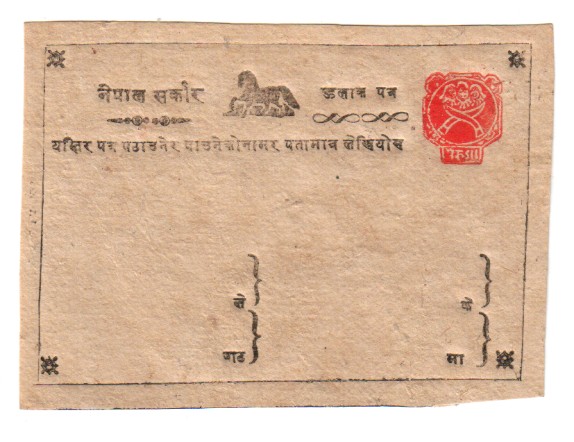
These postcards were issued in 1887 in the value 3 1/2 p red.
Examples of stamps of India, used in Nepal:
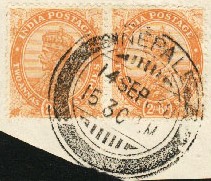
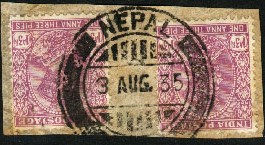
(Reduced sizes)